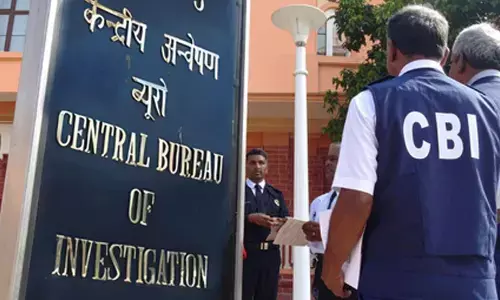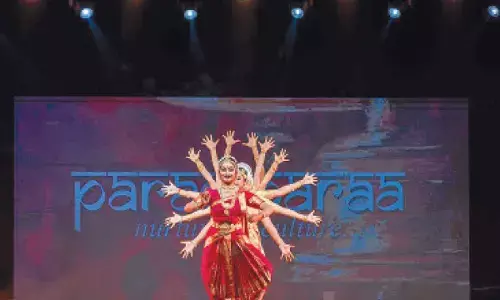India, the new El Dorado for world sport?

India, The New El Dorado for World Sport. Every international sportsperson or official visiting India says this is the place to play. What he or she actually means is this is the El Dorado for sport.
.jpg) Every international sportsperson or official visiting India says this is the place to play. What he or she actually means is this is the El Dorado for sport.
Every international sportsperson or official visiting India says this is the place to play. What he or she actually means is this is the El Dorado for sport.
Ever since the Indian economy opened up in the early '90s, sport has become an industry. Now, the superfluity of cash-rich leagues is only proving the point, attracting athletes from all over the world.
Cricket naturally was the first to see the potential within a couple of years of the then prime minister P.V. Narasimha Rao's liberalisation policy.
Chiefs of world football, hockey, boxing and badminton federations have also seen India as a major marketing hub for international sport, even if the country is not in elite league.
All the leagues that have sprung up in the last few years have dragged spectators out of the television comfort in the living rooms to the playing arenas. Though the spectator response or the telly reach of most of these leagues can never match TRP ratings of cricket, they have proved that there is space for every sport under the sun in a vast and diverse country like India.
The two tennis leagues, Mahesh Bhupathi's brainchild the International Tennis Players League (ITPL) and Vijay Amritraj's Champions Tennis League (CTL), roped in the world's top men and women stars to play here.
Bhupathi could get Roger Federer, Novak Djokovic, Serena Williams and Maria Sharapova, Pete Sampras and Goran Ivanisevic, along with a host of other top-ranked players. Amritraj's format was confined to India with promising domestic players getting a chance to rub shoulders with the top players. The two leagues served the clientele they had planned to.
Once the stadiums started getting packed the performance of home-grown players has become the subject matter of social discussions. Cricket naturally was the front-runner with innovative ideas and yet it took a decade for the Indian board to take the plunge.
It was the forward-looking board president, the late Madhavrao Scindia, who had a blueprint for a 50-over inter-city league in the early 1990s, long before Lalit Modi came up with his now popular Indian Premier League (IPL), since there was no 20-overs cricket then.
Scindia's dream was shattered because his own board did not want any privately-owned party to organise an event of unimaginable enormity.
The more dynamic Lalit Modi bulldozed his way through the conservative board to put in place the IPL, single-handedly marketing it. His own colleagues in the board felt insecure seeing his rapid rise as a dynamic organiser and threw him out once the purpose was served. They knew the IPL was on autopilot and the sheer popularity of cricket will carry it forward, notwithstanding the downside.
Of all the leagues which came in the wake of the IPL, football's Indian Super League (ISL) and the Hockey India League (HIL) have given a clear indication that they are here to stay.
Like the IPL, the city-based ISL franchises have done enough for the spectators to respond in a big way, somewhat matching the IPL crowds at certain centres and exceeding in places like Kolkata and Kochi, Goa and Guwahati.
All that the ISL orgainsers have to do is to make the game a little more attractive, bringing in active footballers to mix with the big names of yesteryears. The ISL can become a competition of international quality and that should entice youngsters to take to football. They in turn will bring more and more spectators from cricket in a 'ghar-wapasi' of sorts.
Once the ISL becomes the true pro league of India, it should transform the country into a football nation that can at least stand up to other powerhouses in the region, if not emerge as a "global power" the organisers think that it would. That's saying something.
Marketing whizkids look at India as the capital of international sports leagues. Till the ISL came along, only the IPL and its global avatar the Champions League have survived and gained more muscle over the years.
All other leagues are struggling to sustain for want of sponsors, who have the monetary capacity to wait for a couple of years for their franchises to break even.
It all started with the hockey league with all the innovative contraptions but once the Indian Hockey Federation (IHF) and the sponsors got into trouble it went out after four editions in the new millennium.
After the short-lived World Series Hockey, which never looked like going beyond the first edition, Hockey India (HI) floated its own major league - the HIL - and like cricket and football it also appears to grow roots. In the next couple of years it is expected to be a 10-team league.
The league has given the Indian players much-needed confidence that they can take on the best in the business, though a couple of team owners are looking to offload their stake.
Badminton and volleyball have also found it difficult to attract sponsors after one and two seasons respectively while wrestling is still looking for the moneybags to lay the mats.
The Indian racing league was announced in 2011, but the idea remained only on paper with Formula 1 overshadowing the motorsports scene.
But the leagues that really created a big impression are the two kabaddi leagues. Surprisingily, Bollywood's involvement made them more exciting. The sport has become a television sport.
Badminton had an attractive international line-up of stars and had reasonable success in the Indian Badminton League (IBL), though the coffers have little to show to make it viable.
After the 2013 inaugural edition, this year's edition was dropped so that the Badminton World Federation (BWF) could tweak its calendar to provide a three-month window for leagues all over the world to get slots before the new season gets under way in March.
Table tennis is next in line. If properly projected and if it could get the top stars from Europe and Asia, the league could be a smashing success. Wrestling and motor racing league are waiting to join the circus. Then there will, perhaps, be a women's football league. Eventually there will be a clash of leagues!
















